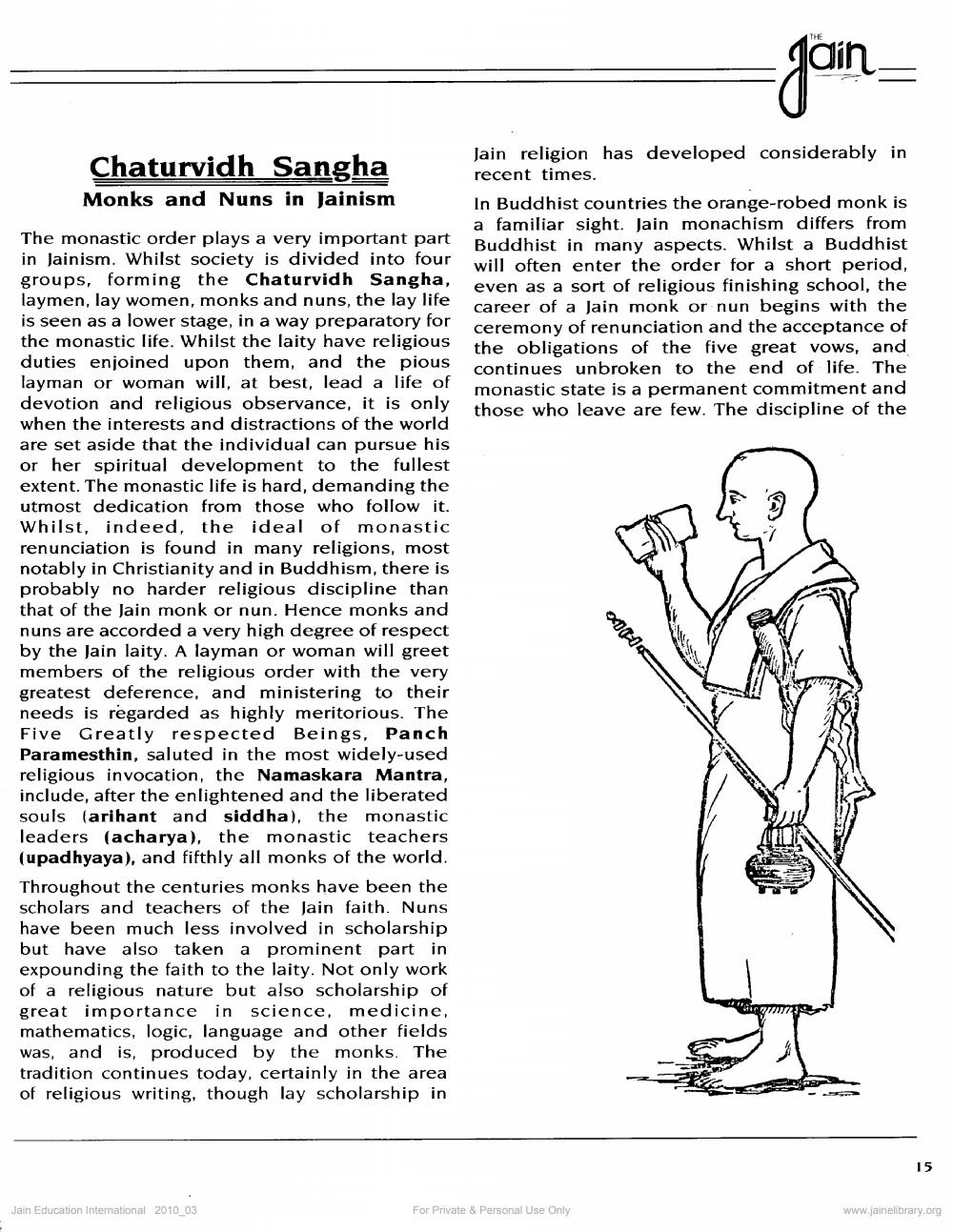________________
Eguin_
Chaturvidh Sangha Monks and Nuns in Jainism
Jain religion has developed considerably in recent times. In Buddhist countries the orange-robed monk is a familiar sight. Jain monachism differs from Buddhist in many aspects. Whilst a Buddhist will often enter the order for a short period, even as a sort of religious finishing school, the career of a Jain monk or nun begins with the ceremony of renunciation and the acceptance of the obligations of the five great vows, and continues unbroken to the end of life. The monastic state is a permanent commitment and those who leave are few. The discipline of the
The monastic order plays a very important part in Jainism. Whilst society is divided into four groups, forming the Chaturvidh Sangha, laymen, lay women, monks and nuns, the lay life is seen as a lower stage, in a way preparatory for the monastic life. Whilst the laity have religious duties enjoined upon them, and the pious layman or woman will, at best, lead a life of devotion and religious observance, it is only when the interests and distractions of the world are set aside that the individual can pursue his or her spiritual development to the fullest extent. The monastic life is hard, demanding the utmost dedication from those who follow it. Whilst, indeed, the ideal of monastic renunciation is found in many religions, most notably in Christianity and in Buddhism, there is probably no harder religious discipline than that of the Jain monk or nun. Hence monks and nuns are accorded a very high degree of respect by the Jain laity. A layman or woman will greet members of the religious order with the very greatest deference, and ministering to their needs is regarded as highly meritorious. The Five Greatly respected Beings, Panch Paramesthin, saluted in the most widely-used religious invocation, the Namaskara Mantra, include, after the enlightened and the liberated souls (arihant and siddha), the monastic leaders (acharya), the monastic teachers (upadhyaya), and fifthly all monks of the world. Throughout the centuries monks have been the scholars and teachers of the Jain faith. Nuns have been much less involved in scholarship but have also taken a prominent part in expounding the faith to the laity. Not only work of a religious nature but also scholarship of great importance in science, medicine, mathematics, logic, language and other fields was, and is, produced by the monks. The tradition continues today, certainly in the area of religious writing, though lay scholarship in
15
Jain Education Intemational 2010_03
For Private & Personal Use Only
www.jainelibrary.org




